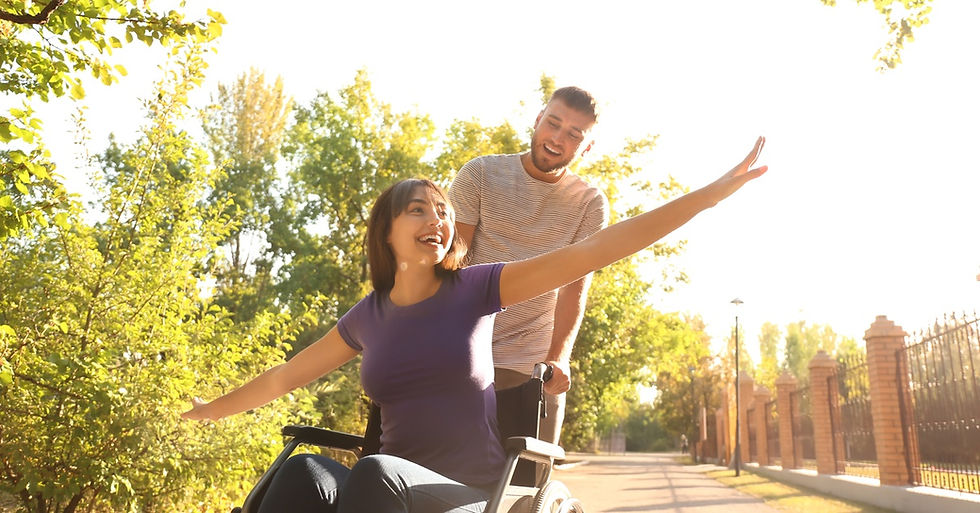A Comprehensive Guide to Essential Medical Supplies for a First Aid Kit
- Complete Medical Supply

- Jun 21, 2023
- 4 min read

A well-stocked first aid kit is a vital component of any household, workplace, or travel bag. In times of emergencies, having the necessary medical supplies readily available can make a crucial difference in providing immediate care. This comprehensive guide will walk you through the essential medical supplies needed for a well-rounded first aid kit, ensuring you are prepared for a variety of common injuries and medical situations.
I. Basic Supplies
Adhesive bandages: These versatile bandages come in assorted sizes and are used to cover small cuts, abrasions, and blisters. They provide a protective barrier and help promote healing.
Sterile gauze pads: Used for cleaning wounds and applying pressure to control bleeding, sterile gauze pads are essential for wound care. They come in various sizes and can be secured with medical tape.
Medical tape: This adhesive tape is used to secure dressings and bandages in place. It provides stability and helps prevent contamination.
Antiseptic wipes/solution: These wipes or solutions are used to clean wounds and prevent infection. They are typically alcohol-based and should be used before applying bandages or dressings.
Disposable gloves: Protecting yourself and others from cross-contamination is crucial. Disposable gloves provide a barrier against bodily fluids and should be worn when providing first aid.
Tweezers: Useful for removing splinters, foreign objects, or debris from the skin. Make sure to clean the tweezers before and after use.
Scissors: Having a pair of scissors in your first aid kit is essential for cutting tape, clothing, or gauze in emergency situations.
II. Wound Care
Sterile saline solution: This solution is used to irrigate and cleanse wounds. It helps remove debris and bacteria, reducing the risk of infection.
Antibiotic ointment: Applying antibiotic ointment to minor cuts and burns helps prevent infection. It promotes healing and creates a protective barrier.
Hydrogen peroxide: It is an antiseptic that can be used to clean wounds. However, it should not be used for long-term wound care as it may delay healing.
Sterile eye wash solution: In case of eye injuries or chemical exposure, a sterile eye wash solution can flush out foreign objects or chemicals, providing immediate relief.
Sterile adhesive strips (butterfly closures): These small adhesive strips are used to close small wounds and help minimize scarring. They are particularly useful for shallow cuts.
Sterile wound closure strips: For lacerations that require added support, wound closure strips provide excellent tensile strength. They help bring wound edges together and promote healing.
Non-stick sterile dressings: These dressings are designed to cover larger wounds and burns. They are non-adherent, minimizing pain and trauma during dressing changes.
Burn gel or ointment: Burn gel or ointment provides soothing relief and aids in healing minor burns. It helps cool the affected area and protect against infection.
III. Medications and Pain Relief
Antihistamines: Antihistamines help alleviate symptoms of allergic reactions and insect bites, such as itching, redness, and swelling.
Pain relievers: Over-the-counter pain relievers like acetaminophen or ibuprofen can help alleviate minor aches, pains, and fever.
Antacids: Antacids provide relief from indigestion, heartburn, and acid reflux. They neutralize stomach acid and help reduce discomfort
Antidiarrheal medication: In cases of mild diarrhea, antidiarrheal medications can help control symptoms and provide relief. They work by reducing bowel movements and restoring normal digestion.
Oral rehydration salts: Dehydration is a common concern during illness or in hot climates. Oral rehydration salts help replenish electrolytes and fluids lost due to vomiting, diarrhea, or excessive sweating.
Epinephrine auto-injector: Individuals with severe allergies or a history of anaphylaxis should carry an epinephrine auto-injector. This device delivers a dose of epinephrine to counteract severe allergic reactions until medical help arrives.
IV. Miscellaneous Supplies
CPR mask: During cardiopulmonary resuscitation (CPR), a CPR mask creates a barrier between the rescuer and the person in need. It helps prevent the transmission of bodily fluids and provides a safer method for rescue breathing.
Instant cold packs: These packs are activated by squeezing or shaking, creating a cooling effect that helps reduce swelling and relieve pain in sprains, strains, or minor injuries.
Emergency blanket: Also known as a space blanket or thermal blanket, it is made of a lightweight, heat-reflective material. It helps retain body heat in cases of hypothermia or shock.
Digital thermometer: Accurate body temperature measurement is vital in assessing illness or fever. A digital thermometer provides quick and reliable readings for monitoring body temperature.
Safety pins: Safety pins are useful for securing bandages, slings, or improvised splints. They ensure that dressings or immobilization devices stay in place.
Splinting materials: SAM splints or triangular bandages are essential for stabilizing fractures, sprains, or dislocations. They provide support and immobilization until professional medical help can be sought.
Medical information and emergency contact list: Including essential medical information such as allergies, medications, and emergency contacts in your first aid kit can be crucial in providing accurate and timely care.
Conclusion
Building a well-equipped first aid kit is an essential step in ensuring the safety and well-being of yourself, your loved ones, or anyone in need of immediate medical attention. By including the mentioned essential medical supplies, you can be prepared to handle a wide range of injuries, minor ailments, and emergency situations. Remember to periodically check and restock your first aid kit to maintain its readiness.
It is important to note that while a first aid kit is a valuable resource, it is not a substitute for professional medical help. In cases of serious or life-threatening emergencies, always seek immediate medical assistance. Additionally, it is recommended to undergo first aid and CPR training to enhance your skills and confidence in providing emergency care.
By following this comprehensive guide, you can have peace of mind knowing that you are equipped with the necessary tools to provide initial care until professional medical assistance arrives. Stay prepared, stay safe!




Comments